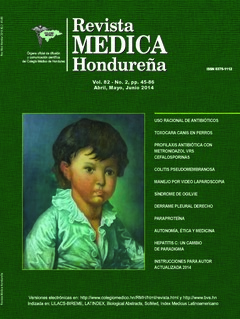Pseudomembranous colitis case presentation and review
Keywords:
colitis, pseudomembranous, clostridium difficileAbstract
Background: Clostridium difficile is a Gram positive bacillus spore forming, part of the normal intestinal microbiota in 1-3% of healthy adults. The first case of pseudomembranous colitis was reported in 1893, and its relationship with prolonged use of antibiotics was first described in 1974 in association with Clindamycin. Case: We present the case of a young female patient, admitted to the hospital with the diagnosis of transverse myelitis, associated to erythematous systemic lupus, subclinical hypothyroidism, and urinary tract infection, the latter treated during hospitalization, after which she developed a prolonged case of diarrhea that did not cease with intravenousTrimethoprim Sulfamethoxazol, quinolone or second generation cephalosporin. The Clostridium difficile toxins turned out positive in stool sample, establishing the diagnosis of pseudomembranous colitis. Specific treatment was begun and the severe diarrhea stopped. Conclusion: Despite the existing novel therapeutic approaches are continuously presenting a high incidence of Clostridium difficile infection, with frequent reports of hypervirulent strains, for example of the BI / NAP1 / 027 (5325), which give strength and predispose patients, especially those with some type of immunosuppression, to have recurrent episodes. Therefore effective prevention strategies are needed.
Downloads
437




